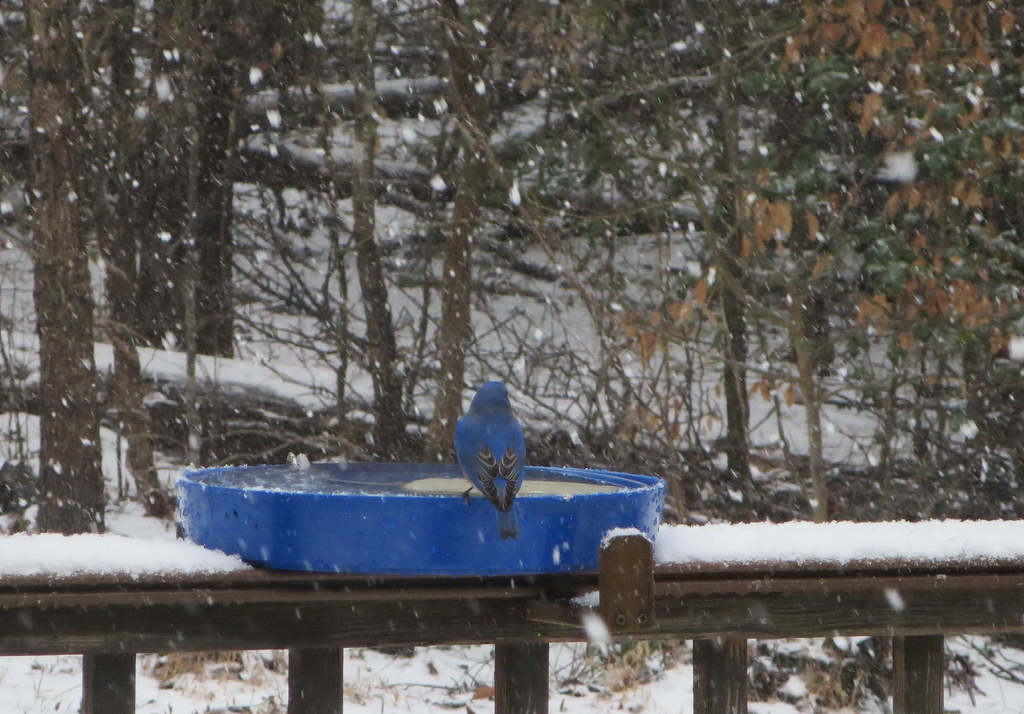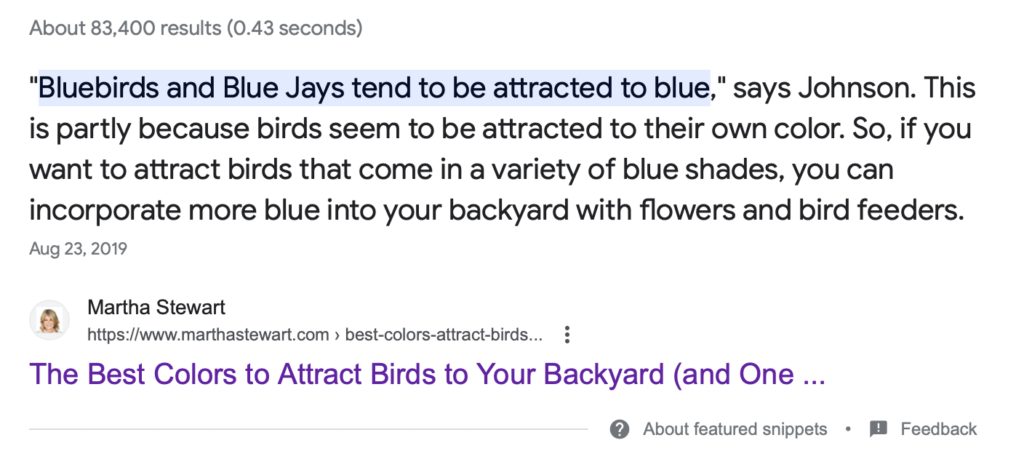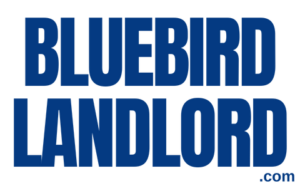
Over the last 20 years I have seen many folks on Facebook groups, bluebird forums, and across the internet saying that bluebirds are attracted to the color blue. One year, this claim even convinced me to hang a blue ribbon near my bluebird nest box to try to attract a nesting pair faster! Bluebirds did eventually build a nest in that nest box, but I have no idea if they were attracted to the blue ribbon or not. They didn’t seem to mind the blue-colored tassle, but they didn’t pay much attention to it either.
Since I wasn’t quite satisfied with my low-budget color experiment, I decided to do a deep dive into the available scientific research on bluebirds (there’s quite a bit out there!) to see if bluebirds are actually attracted to one color over another. You’re probably wondering what the truth is. Are bluebirds attracted to the color blue?
Although people say that bluebirds are attracted to the color blue, there isn’t any scientific evidence to support this claim – the evidence is mostly anecdotal. Fortunately, nest boxes and mealworm feeders that are painted blue seem to work fine for attracting bluebirds as long as they are made from wood or PVC pipe.
Furthermore, scientists had once hypothesized that female bluebirds preferred male bluebirds with brighter blue plumage (the bluer the better). They ended up concluding that there was no evidence for this color preference. We will touch on this study and more later in this article.
First, what are people saying on the internet about bluebirds and the color blue? Let look at a few examples.
Bluebirds’ Attraction to the Color Blue – Anecdotes
“Plant blue flowers to attract bluebirds!” Popular wildlife and gardening magazines often give advice just like this without providing much evidence to back up the claim.
As an example, the website ChirpforBirds.com states the following: “It may come as no surprise that bluebirds and blue jays favor the color blue” (source).
Unfortunately, the author follows that sentence with a few flower suggestions to plant in your backyard, but nothing to actually convince us that bluebirds are really attracted to blue.

Martha Stewart’s popular website also claims that bluebirds and blue jays are both drawn to the color blue, because birds “seem to be attracted to their own color” (source). Similarly, the site doesn’t provide much evidence to support the claim.
All over the internet you can find examples of people saying that bluebirds like such-and-such a color. The good thing is that this claim is fairly innocent, since the color blue doesn’t seem to actively be bad for bluebirds. But, where is the real evidence that they’re actually attracted to the color?
Let’s look at a few examples of scientific studies that have been done regarding bluebirds and color.
Bluebird Color Attraction – Scientific Studies
A quick search of Google Scholar will show you that there aren’t any available studies testing whether or not bluebirds are attracted to blue-colored things. Most of the scientific studies that have been done concerning bluebirds and color revolve around their mating preferences, feather color, and egg color. Here are a few interesting studies to note:
1. A field test of female mate preference for male plumage coloration in eastern bluebirds
This study from Auburn University (USA) set out to test whether or not female eastern bluebirds would show a preference to male partners with brighter blue plumage. The hypothesis was that they would prefer a brighter blue partner – the bluer the better! Their conclusion was less that exciting: “We found no support for the hypothesis that the coloration of male eastern bluebirds functions as a criterion in female mate choice” (source).
In a small way, this study suggests that bluebirds don’t necessarily care about the color blue, even when it comes to picking their mate.
2. Egg coloration is correlated with female condition in eastern bluebirds (Sialia sialis)
Another Auburn University study from 2005 tested whether or not egg color was indicative of the health condition of the female bluebird who laid the eggs. They concluded that older and healthier female bluebirds laid eggs with a brighter blue color (source).
While this possibly can explain why some bluebirds lay white eggs, this study was less about color preference and more about how egg color correlates with a female bluebird’s physical condition.
More Research Needed: A Suggested Color Study
While there are plenty of studies out there that have to do with bluebirds and color, more could be done to test whether or not bluebirds are attracted to the color blue.
For example, a bluebird trail monitor could set up 100 pairs of Gilbertson-style PVC pipe nest boxes along a bluebird trail, painting half of the paired nest boxes blue and leaving the other half white. This could potentially provide some interesting data on whether or not bluebirds truly have a preference for the color blue when it comes to choosing a nest box.
Conclusion
As you can see, the question of whether or not bluebirds are attracted to the color blue leaves a lot of room for exploration. There is much more that could be studied if researchers or hobbyists wanted to arrive at a definitive answer. What we know now for certain is that bluebirds might be attracted to the color blue in some instances, but mostly they just seem indifferent to the color. At least it seems that the color doesn’t bother them or deter them from using a nesting site or feeder.
If you want to use a blue-colored nest box or feeder, that’s perfectly fine. My biggest recommendation at Bluebird Landlord would be to use one that is made from a quality wood, like cedar, colored with a non-toxic paint. I personally don’t use blue nest boxes or mealworm feeders because I have had so much success with the plain, natural-wood style nest boxes and feeders.
To see the platform feeder and bluebird nest boxes that I recommend, go to this website’s Recommended Tools page by clicking this link.

